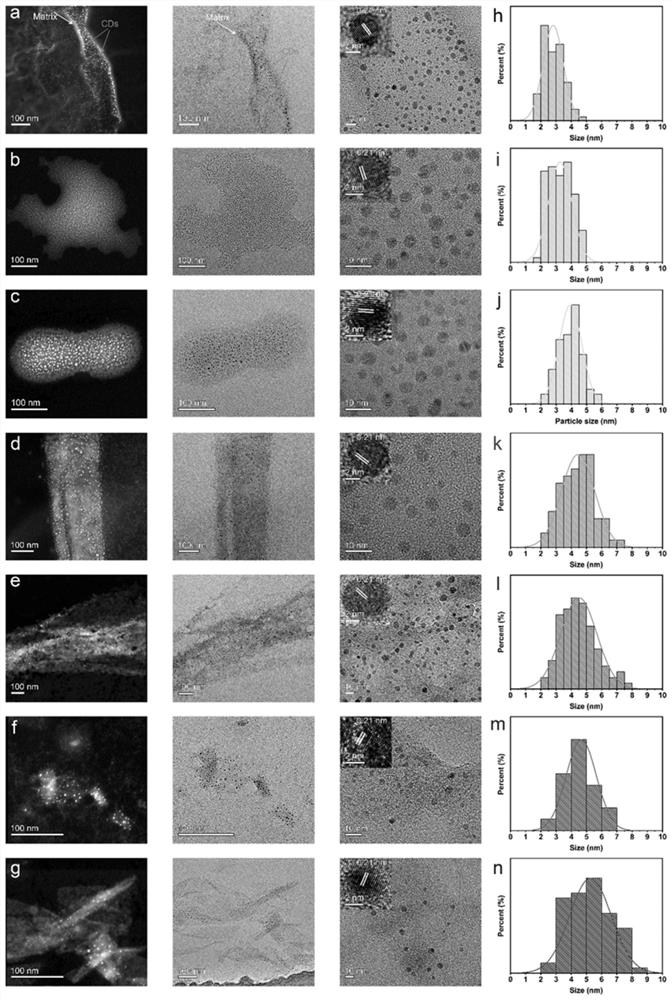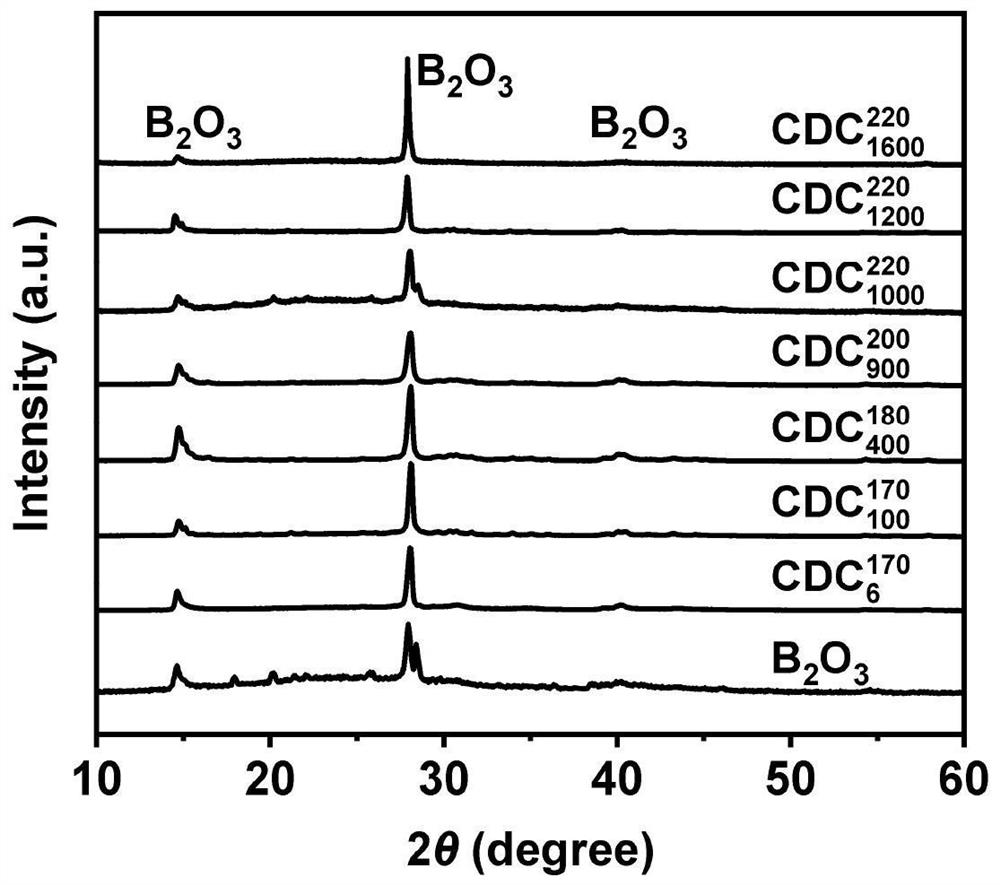Panchromatic adjustable long-life room-temperature phosphorescent material and preparation method thereof
A room-temperature phosphorescence and full-color adjustable technology, which is applied in the field of phosphorescent materials to achieve the effects of high yield, simple preparation method, and cheap and easy-to-obtain raw materials
- Summary
- Abstract
- Description
- Claims
- Application Information
AI Technical Summary
Problems solved by technology
Method used
Image
Examples
Embodiment 1
[0040] Add 6000mg of boric acid and 6mg of citric acid into a glass bottle filled with 25mL of deionized water. After preliminary dissolution, place the glass bottle open in a heating block and heat it on a heating platform at 110°C to fully dissolve the boric acid and citric acid. In water, continue to heat overnight to completely evaporate the deionized water to obtain a mixture of citric acid and boric acid a.
[0041] Heat and melt the mixture a of citric acid and boric acid at 170°C, cool to room temperature after 5h, and obtain blocky blue phosphorescent carbon dot composites
[0042] figure 2 a and 3 are the transmission electron micrographs of the blue phosphorescent material obtained in this example, and the X-ray diffraction spectrum can be seen from the figure that the prepared room temperature phosphorescent material is a carbon dot composite, and the carbon dot is composed of citric acid and boric acid reactants The carbon dots are generated and uniformly disp...
Embodiment 2
[0044] Add 6000mg of boric acid and 100mg of citric acid into a glass bottle filled with 25mL of deionized water. After initial dissolution, place the glass bottle in a heating block and heat it on a heating platform at 110°C to fully dissolve the boric acid and citric acid. In water, continue to heat overnight to completely evaporate the deionized water to obtain a mixture b of citric acid and boric acid.
[0045] Heat and melt the mixture b of citric acid and boric acid at 170°C, cool to room temperature after 5h, and obtain a green phosphorescent carbon dot composite in block form
[0046] figure 2 b and image 3 They are the transmission electron microscope photos of the green phosphorescent material obtained in this example, and the X-ray diffraction spectrum can be seen from the figure that the prepared room temperature phosphorescent material is a carbon dot composite, and the carbon dots are generated in situ by the reaction of citric acid and boric acid and are un...
Embodiment 3
[0048] Add 6000mg of boric acid and 400mg of citric acid into a glass bottle filled with 25mL of deionized water. After initial dissolution, place the glass bottle open in a heating block and heat it on a heating platform at 110°C to fully dissolve the boric acid and citric acid. In water, continue to heat overnight to completely evaporate the deionized water to obtain a mixture c of citric acid and boric acid.
[0049] Heat and melt the mixture c of citric acid and boric acid at 180°C, cool to room temperature after 5h, and obtain blocky yellow phosphorescent carbon dot composites
[0050] figure 2 c and image 3 They are the transmission electron micrographs of the yellow phosphorescent material obtained in this example, and the X-ray diffraction spectrum. It can be seen from the figure that the prepared room temperature phosphorescent material is a carbon dot composite, and the carbon dots are generated in situ by the reaction of citric acid and boric acid and are unifo...
PUM
| Property | Measurement | Unit |
|---|---|---|
| particle diameter | aaaaa | aaaaa |
| particle diameter | aaaaa | aaaaa |
| particle diameter | aaaaa | aaaaa |
Abstract
Description
Claims
Application Information
 Login to View More
Login to View More - R&D
- Intellectual Property
- Life Sciences
- Materials
- Tech Scout
- Unparalleled Data Quality
- Higher Quality Content
- 60% Fewer Hallucinations
Browse by: Latest US Patents, China's latest patents, Technical Efficacy Thesaurus, Application Domain, Technology Topic, Popular Technical Reports.
© 2025 PatSnap. All rights reserved.Legal|Privacy policy|Modern Slavery Act Transparency Statement|Sitemap|About US| Contact US: help@patsnap.com



